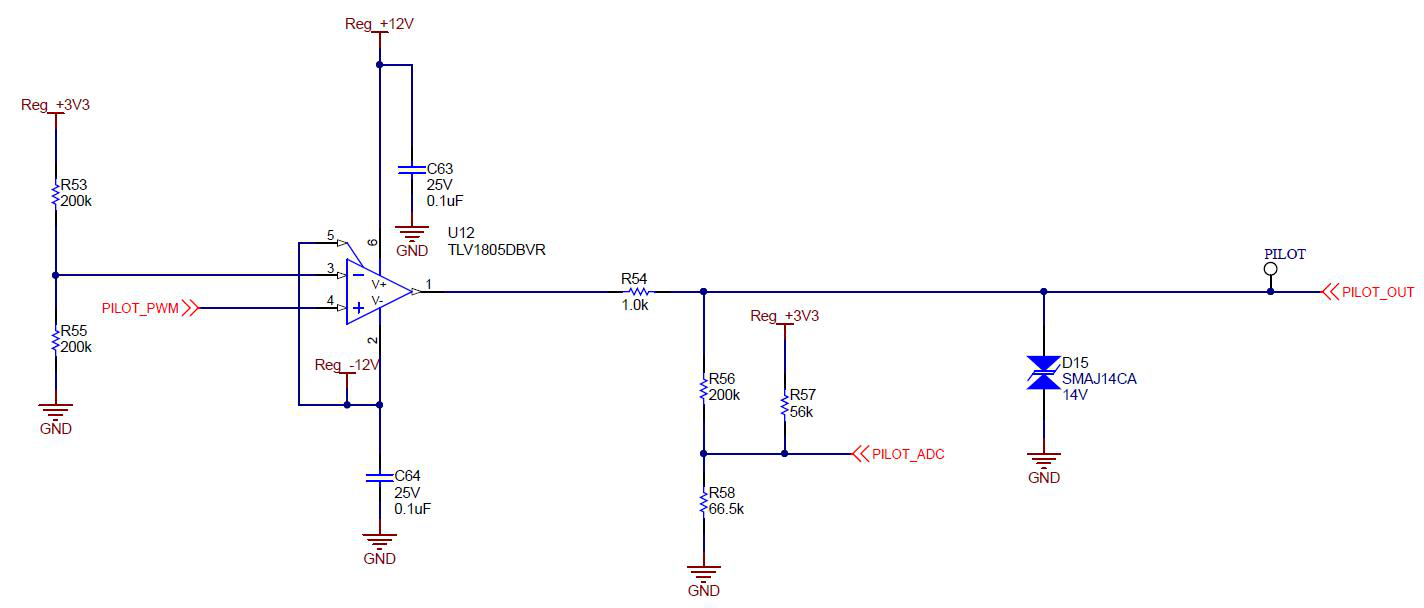JAJU858 December 2022
- 概要
- リソース
- 特長
- アプリケーション
- 5
- 1System Description
-
2System Overview
- 2.1 Block Diagram
- 2.2
Design Considerations
- 2.2.1
Isolated AC/DC Power Supply Design
- 2.2.1.1 Input Bulk Capacitance and Minimum Bulk Voltage
- 2.2.1.2 Transformer Turns-Ratio, Primary Inductance, and Primary Peak Current
- 2.2.1.3 Transformer Parameter Calculations: Primary and Secondary RMS Currents
- 2.2.1.4 Main Switching Power MOSFET Selection
- 2.2.1.5 Rectifying Diode Selection
- 2.2.1.6 Output Capacitor Selection
- 2.2.1.7 Capacitance on VDD Pin
- 2.2.1.8 Open-loop Voltage Regulation Versus Pin Resistor Divider, Line Compensation Resistor
- 2.2.1.9 Feedback Elements
- 2.2.1.10 Backup Power Supply
- 2.2.1.11 Supercapacitor Selection
- 2.2.1.12 Supercapacitor Charger Design
- 2.2.2 Control Pilot Signal Interface
- 2.2.3 Relay Drive and Weld Detect
- 2.2.4 Residual Current Detection
- 2.2.1
Isolated AC/DC Power Supply Design
- 2.3 Highlighted Products
- 3Hardware, Testing Requirements, and Test Results
- 4Design and Documentation Support
- 5About the Author
2.2.2.1.2 Control Pilot Signal Circuit
The pilot signal is required to travel down several meters of cable and through a load resistance. The pilot signal is also a bipolar ±12-V signal, which requires special consideration. To accommodate these parameters, an amplifier with a wide input range and reasonable power output is selected. The TLV1805 device has a voltage rating of ±18 V and a current rating of 475 mA, making the device a good match for the application. In addition, while most EVSEs do not require an automotive qualification, a Q1-rated variant of the TLV1805-Q1 device exists, if this feature is desired.
The amplification circuit is a simple rail-to-rail output configuration of the TLV1805 device, with the MCU I/O driving the positive input. The output of the pilot amplifier is also fed into a simple voltage divider so that the MCU can measure the voltage during operation and detect the load resistance of the vehicle. Figure 2-3 shows the full schematic of this subsystem.
 Figure 2-3 Control Pilot Signal Generator Circuit
Figure 2-3 Control Pilot Signal Generator CircuitTo validate the architecture, the design was tested in the TINA-TI™ software from TI, which is a spice-based simulation tool.